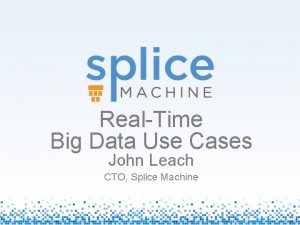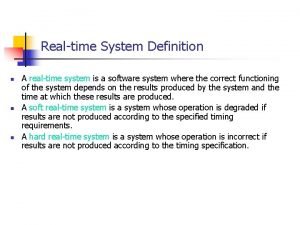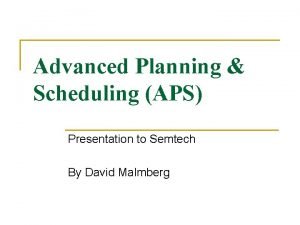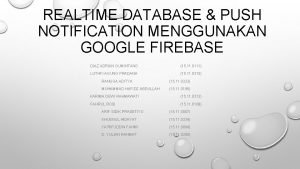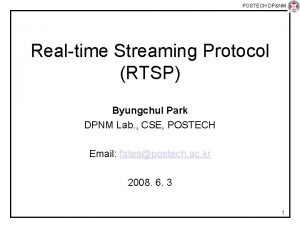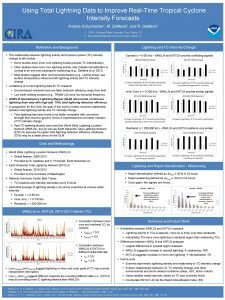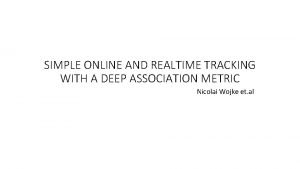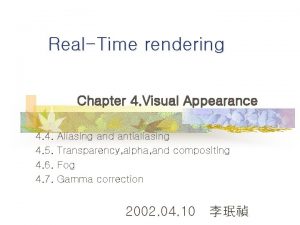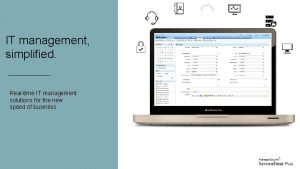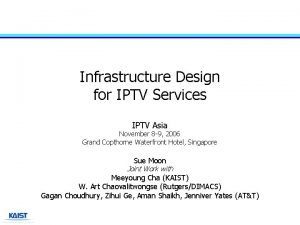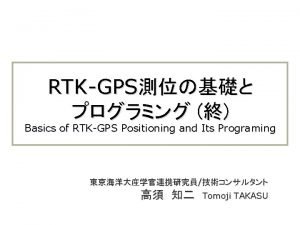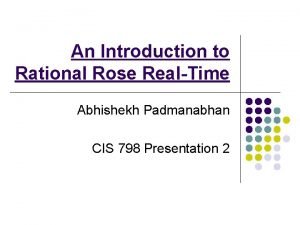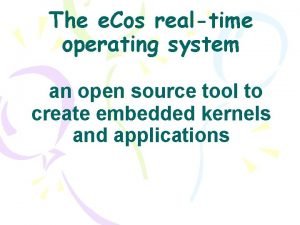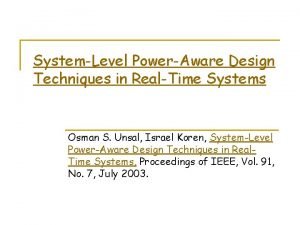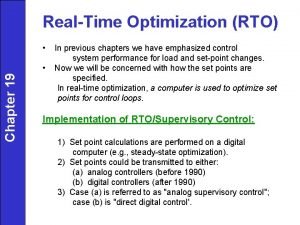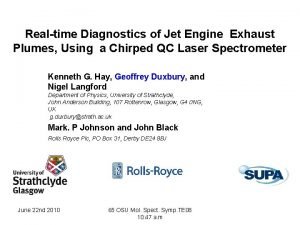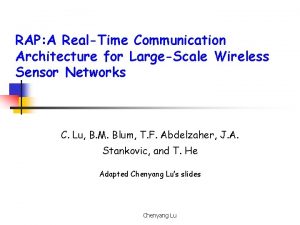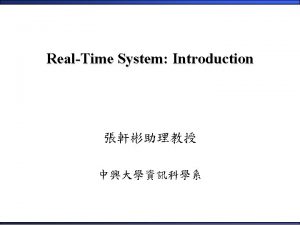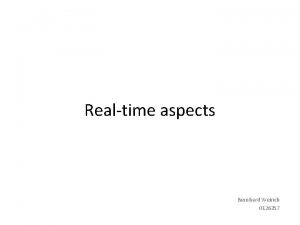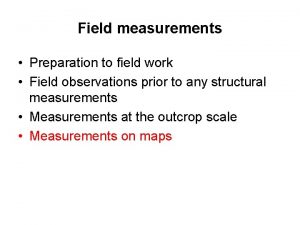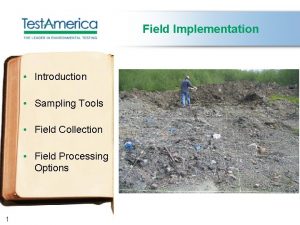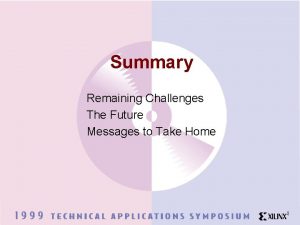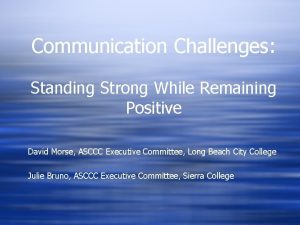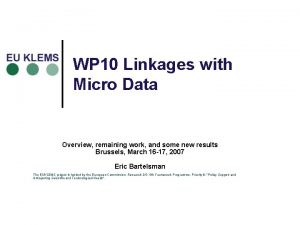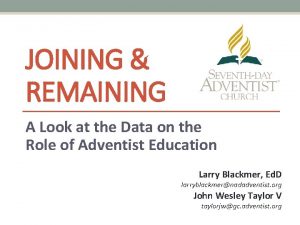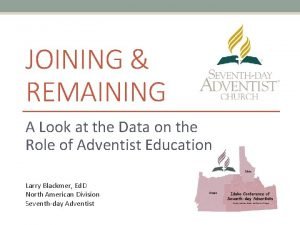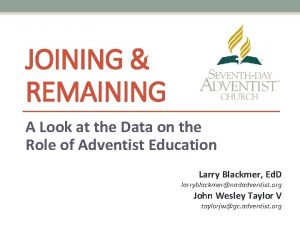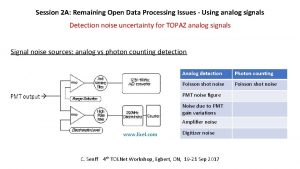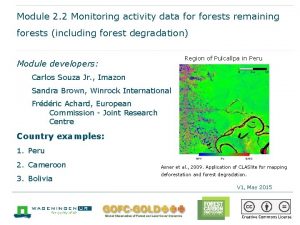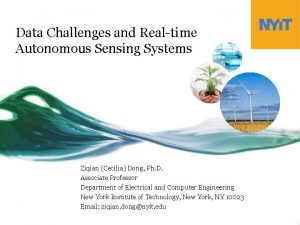Challenges remaining for the field of realtime data




























- Slides: 28

Challenges remaining for the field of real-time data capture Arthur A. Stone Professor, Department of Psychology Director, USC Dornsife Center for Self-Report Science University of Southern California Disclosures: Gallup organization; Adelphi Values

Why this talk? ¡This presentation focuses on Self-reports, but many issues are pertinent to all ambulatory methods ¡Importance of what people tell us about themselves and their circumstances ¡Patient Reported Outcomes (PROs) in health settings ¡Affective, behavioral, and environment qualities ¡Opinions about all manner of topics including political and consumer polls ¡Nomenclature: ESM/EMA/RTDC/AA self-report methods ¡Maybe sr. AA

Why this talk now? ¡Intellectual Streams are rapidly merging Ecological Validity m. Health Quantified Self Movement

Acknowledgement ¡…. of Prior Work ¡ Schwarz, N Retrospective and concurrent self-reports: The rationale for Real-Time Data Capture. In Stone, AA, Shiffman, S, Atienza, A, & Nebeling, L (Eds. ) The Science of Real-Time Data Capture. Oxford University Press, 2007. ¡ Scollon, CN, Kim-Prieto, C, & Diener, E Experience Sampling: Promises and pitfalls, strengths and weaknesses. In Dioener, E (Ed. ) In Assessing well-being: The collected works of Ed Diener, Social Indicators Research Series, 2009. ¡ Silvia, PJ, Kwapil, TR, Eddington, KM, & Brown, LH Missed beeps and missing data: Dispositional and situation predictors of nonresponse in Experience Sampling Research, Social Science Computer Review, 2013. ¡ Schneider, S & Stone, AA Ambulatory and diary methods can facilitate the measurement of patient-reported outcomes. Quality of Life Research, 2016.

Acknowledgement ¡…of Colleagues ¡ USC Dornsife Center for Self Report Science ¡ Stefan Schneider, Ph. D. ¡ Joan Broderick, Ph. D. ¡ Doerte Junghaenel, Ph. D. ¡ Bob Ono, Ph. D. ¡ Marta Walentynowicz, Ph. D. ¡ Marcella May, M. A. ¡ Alicia Boulton, Ph. D. ¡ Ania Filus, Ph. D. ¡ And elsewhere ¡ Joshua Smyth, Ph. D. at Penn State ¡ Joe Schwarz, Ph. D. at Stony Brook University

Before starting… my slight concern

Overview of Challenges and Opportunities ¡Challenges pertain to areas where knowledge is limited ¡ Some are based on lore or the cumulative experience of researchers ¡ Some are viewed as intractable ¡ Some are just overlooked 1. Selection of people and moments 2. Limits and meaning of momentary self-reports 3. Psychometrics 4. Qualitative approaches 5. “Fundamentals” of momentary reports over time 6. Moments or broader coverage? 7. Reactivity and motivation 8. Has RTDC for self-report lived up to its promise? ¡But first, a cross-cutting issue

Cross-cutting issue of reporting ¡ In many of the topics to come, it is difficult to know what was done in a study ¡ Two recent reviews of EMA/ESM in children and for measuring chronic pain ¡ 15 years old, we proposed reporting guidelines for real-time data collection ¡ Turns out that this is especially important given the “replication crisis” in science, and particularly in social psychology ¡ Importance of these recommendations – and of many of the points I’ll make throughout the presentation – depends on questions one is asking ¡ E. g. , creating person-level variables versus examining within-person, momentary associations

Cross-cutting issue of reporting

Cross-cutting issue of reporting

Cross-cutting issue of reporting

1. Selection of all kinds: People ¡The usual suspects -- difficult occupations/ circumstances/lives ¡Technological challenges – perhaps less relevant ¡We have no idea what EMA Study Uptake is like ¡Guess: rather low, but with what biases? ¡Very little data on this topic as the following examples demonstrate:

1. Selection of all kinds: People 2014 Nicotine and Tobacco Research article 12, 970 2016 Stress and Health article 132 461 70

1. Selection of all kinds: Moments ¡The usual suspects ¡Recent reviews of EMA papers ¡ Review of psychiatric EMA studies: 13 of 40 studies, 33%, did not report completion rates (Cain et al. , 2009) ¡ Our review of pain EMA studies, 31 of 104, 30%, did not report completion rates (May et al. , in progress) ¡Computation of Completion rates ¡ Count everyone: Intention to Treat approach? ¡ Or toss those with bad data, and then compute completion rates? ¡ What about suspends, napping, “late” reports? ¡ Despite acceptable overall completion rates, studies sometimes include individuals with unacceptable completion rates

2. Momentary reporting may alter the reporting task ¡Duration of recall period impacts meaning of questions ¡ When information is not fully accessible, respondents may look to the question for guidance ¡ Main issue: Shorter recall periods suggest that more minor instances or intensities are sought ¡ So, minor arguments are reported; lesser affects ¡Secondary issue: Differences in the use of scale anchors ¡ “Moderate” in a brief recall period may mean less that “moderate” in a longer recall period ¡Tertiary issue: Growing Social Desirability as respondents learn about themselves (e. g. , not liking their kids)

3. Psychometrics ¡Not clear why ¡Probably, the idea that because the information measured is apparently accessible, then there is little error to the measurement ¡Measurement properties need to be determined at a within-person basis ¡ E. g. , Bolger’s 2006 approach to reliability

3. Psychometrics ¡Scales versus items ¡Often EMA use single item assessments ¡Relatively little data on increasing momentary reliability ¡Should be large as items are added ¡May be especially important for: ¡Analyses of within-person associations ¡Just in Time Interventions

3. Psychometrics ¡IRT approaches ¡We know little/nothing about: ¡The information functions (difficulty) of items of within-day items ¡Calibration to a known sample ¡Differential Item Function ¡Such information could improve our ability to capture precise information in an efficient and reliable manner ¡Computer Adaptive Testing in EMA ¡An idea that should be implemented

3. Psychometrics ¡Momentary Context effects ¡A ubiquitous though often overlooked issue concerns item context effects ¡Two types of Context: ¡The impact of situation/environment – primary goal ¡Item-order context effects ¡Item-order context: Not only main effects of context questions, but potential interactive effects with group membership ¡No information about if this occurs in EMA ¡Implications: more thoughtful arrangement of questions according to content accessibility (on idea that low accessibility is more susceptible to context effects)

4. Relative absence of Qualitative Approaches ¡“Usability” testing is often done, but that’s different ¡Qualitative techniques have the potential to elucidate the cognitive processes associated with EMA ¡Interpretation of questions ¡Interpretation of instructions (e. g. , reporting period) ¡Possible discovery of new response outcomes (e. g. , contextual factors) ¡Possibility of Real-time qualitative work

5. Some fundamentals poorly understood ¡Similar to the Psychometric point, it isn’t clear that we have exhausted our understanding of “fundamentals” of EMA data ¡What’s happening in the first few days of recording when average outcome levels often decline? ¡Some folks suggest throwing out those days ¡Others ignore ¡Regarding participant burden, the interplay of Assessment Duration, # of Prompts, and # of Days ¡We do not know the calculus

5. Some fundamentals poorly understood ¡However, there may be a U-shaped function regarding burden and completion over time as suggested by Silva et al. , 2013 ¡And perhaps more dense prompting schedules yield better completion rates, also suggested by Silva et al. , 2013 ¡And there is another phenomenon that I believe is less well-know and understood: the decline in variability over time ¡In EMA and in EOD ¡Some data….

5. Some fundamentals poorly understood Schneider, S. Within-person variability diminishes over time in intensive longitudinal assessment studies. Working Paper.

5. Some fundamentals poorly understood Schneider, S. Within-person variability diminishes over time in intensive longitudinal assessment studies. Working Paper.

6. Moments or broader coverage? ¡Of 62 EMA projects with chronic pain patients, 24. 2% (15 projects) did not report the time reference (e. g. , “when prompted” or “in the last X hours”) of their pain item ¡Of the rest, the majority of them used the “momentary” time reference as compared to the “coverage” one Coverage 13% ¡“Coverage” time reference: ¡ In the past 30 min: 3 projects ¡ During the last 2 -3 hours: 1 project ¡ In the past 3 hours: 1 project ¡ Since the previous prompt (~240 min): 1 project Momentary 87%

7. Reactivity ¡Prevalent view is that reactivity is not very important ¡However, there is a nagging question about Self. Monitoring having salutary effects when used as a treatment modality ¡This goes to respondent motivation underlying RTDC ¡There are other person-factors that have not been empirically examined

8. Has RTDC for Self-report lived up to its promise? ¡What’s the promise? ¡First, to provide a means of gathering granular, ecologically valid momentary reports of experience ¡YES – though there are clearly questions about representativeness of respondents and moments ¡Second, to provide an alternative to recall data that is relatively free of bias ¡PARTIALLY – there are very few studies that explicitly show reduced bias or improved construct validity when aggregated RTDC is compared with traditional recall measures

Conclusions ¡ESM/EMA/RTDC/AA methods have become more prevalent and accepted in social science and medical research over the last several decades ¡Much methodologic and analytic progress has been made over the same period ¡I have reviewed several topics that, in my opinion, need additional attention ¡And I hope in a very small way that this presentation inspires such work
 Realtime big data
Realtime big data Real time software definition
Real time software definition Realtime aps software
Realtime aps software Realtime database push
Realtime database push Realtime streaming protocol
Realtime streaming protocol Ecurisa
Ecurisa Forrester wave real time interaction management
Forrester wave real time interaction management Lightning realtime
Lightning realtime Simple online and realtime tracking
Simple online and realtime tracking Visual rendering
Visual rendering Real time characteristics of embedded operating systems
Real time characteristics of embedded operating systems Realtime communications
Realtime communications Realtime it
Realtime it Realtime it
Realtime it Realtime it
Realtime it Grand copthorne waterfront singapore
Grand copthorne waterfront singapore Cac realtime
Cac realtime Realtime forex
Realtime forex Okolm
Okolm Rendering realtime compositing
Rendering realtime compositing Ad hoc realtime
Ad hoc realtime Rose realtime
Rose realtime Ams realtime weather maps central
Ams realtime weather maps central Realtime etl
Realtime etl Cos realtime
Cos realtime Realtime
Realtime Realtime optimization
Realtime optimization Realtime diagnostics
Realtime diagnostics Realtime mobile communication
Realtime mobile communication
